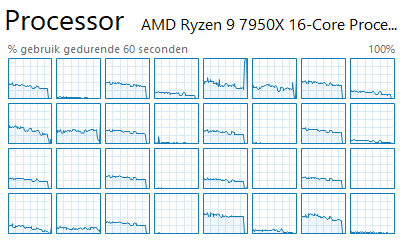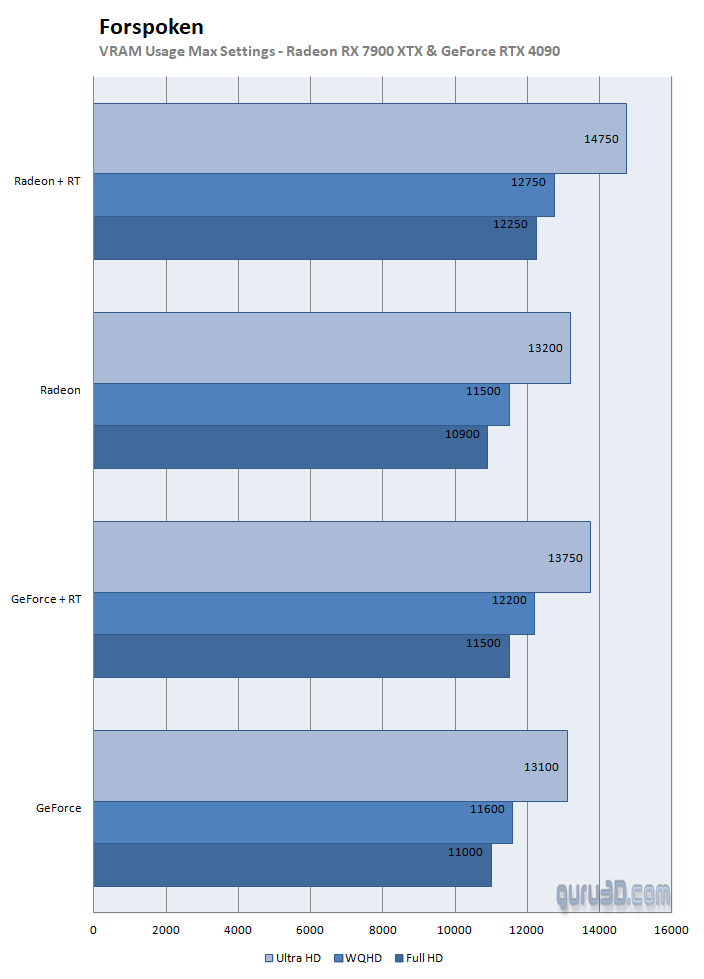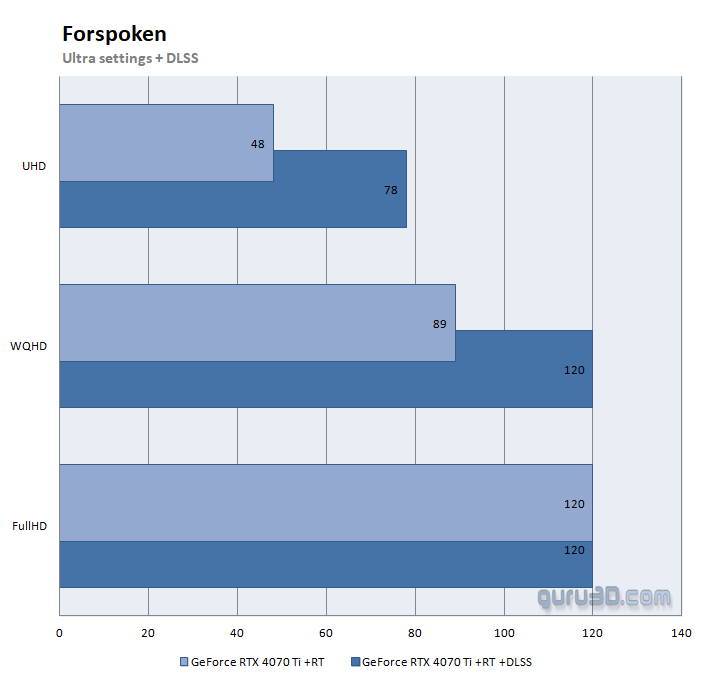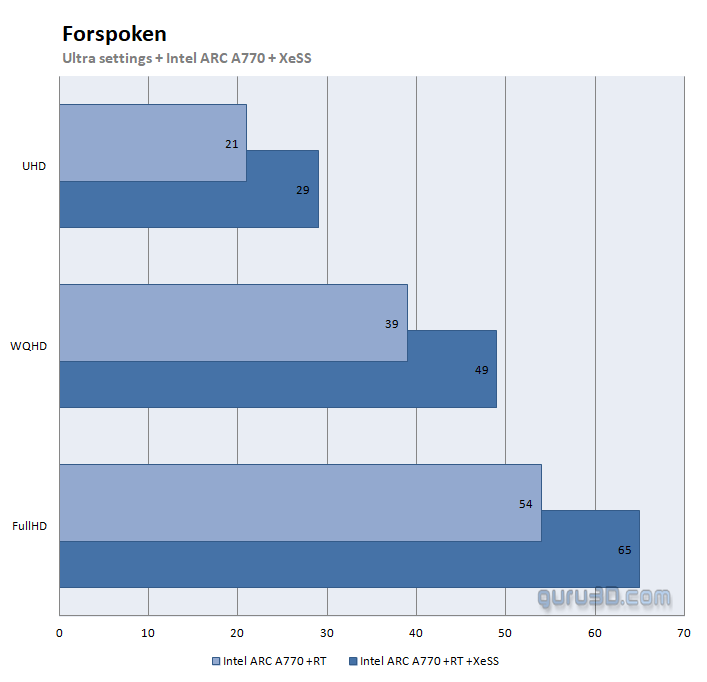Raytracing, CPU utilization, FSR2
Processor usage
The optimal performance of the game can be achieved on processors with a high number of cores, with eight cores or more delivering the top-notch experience.
The game is optimized for multi-core processors but utilizes very few threads. It doesn't put excessive strain on the CPU.
Graphics memory (VRAM) usage
How does the graphics memory usage compare to your display resolution for different graphics cards and VRAM sizes in gaming? To understand this, check out the chart below that compares the three primary resolutions tested and the results listed in MBs. The amount of graphics memory used in games can vary based on the game settings, actions, and scenes. When you start exploring in-game, the graphics memory usage will increase, as the consumption is dynamic and can change at any moment. The more demanding the scene, the higher the graphics memory usage will be (such as entering a scene with many buildings or plants).
Both NVIDIA and AMD graphics cards have high VRAM usage, even exceeding 10 GB at 1080p resolution. This usage becomes even more significant when Raytracing is enabled. BAsically, the game is caching as much as it can.
Raytracing
To accurately assess the difference between Raytracing on and off, it requires a keen eye. However, it's important to note that the game does support Raytracing. We tested various graphics cards to determine their performance across three common resolutions. Our results showed that with many of the compatible GPUs, playing at resolutions up to 2560x1440 is smooth and seamless. It's worth mentioning that the results listed below are based on the performance of the Radeon RX 7900 XT.
FSR
FSR (FidelityFX Super Resolution) is a technology developed by AMD that aims to deliver improved image quality and performance without compromising on image quality. It is a computational image upscaling solution that uses advanced filtering techniques to improve the quality of in-game images. Surprisingly the game supports FSR2, and even more surprisingly, it's not offering much more performance.
DLSS
DLSS (Deep Learning Super Sampling) is a technology developed by NVIDIA that utilizes artificial intelligence and deep learning to improve the quality and performance of games on graphics cards. It uses AI algorithms to upscale images, resulting in higher frame rates and improved image quality. DLSS is also present in the form of DLSS2. Mind you that this game has a hard cap of 120 FPS.
XeSS
XeSS (Intel Xe Scalable System Architecture) is a technology developed by Intel that aims to deliver high performance and improved energy efficiency for gaming and professional applications. It utilizes a scalable architecture to support a wide range of graphics and compute workloads, enabling smooth and efficient performance.







